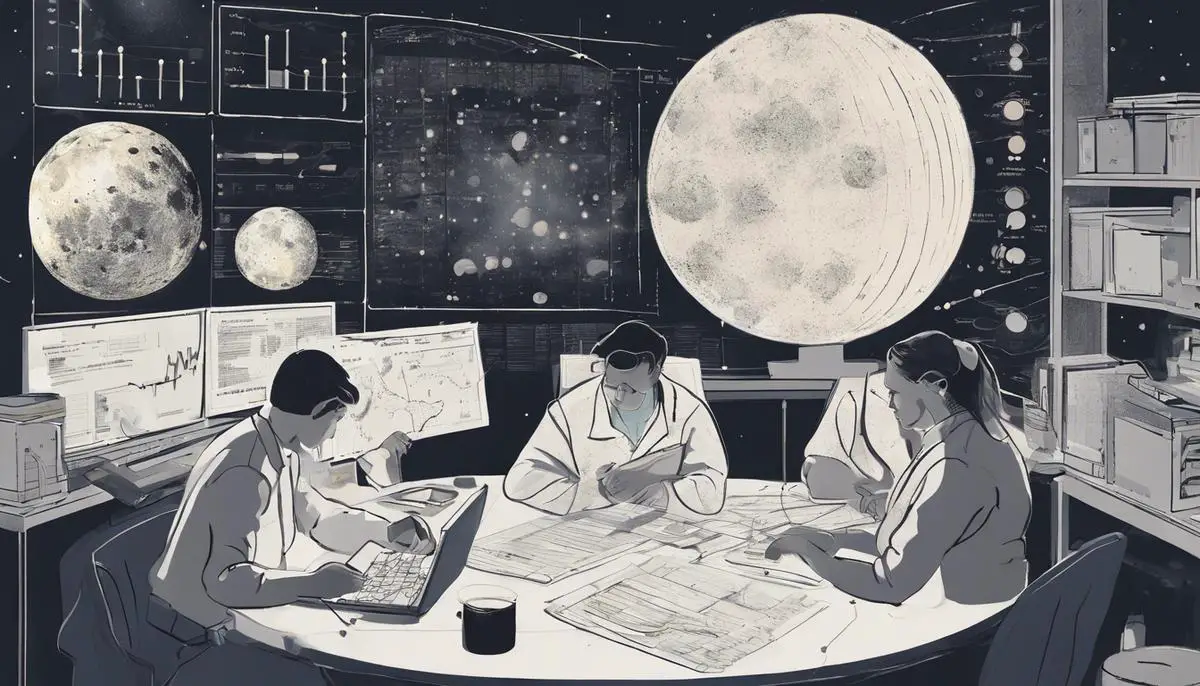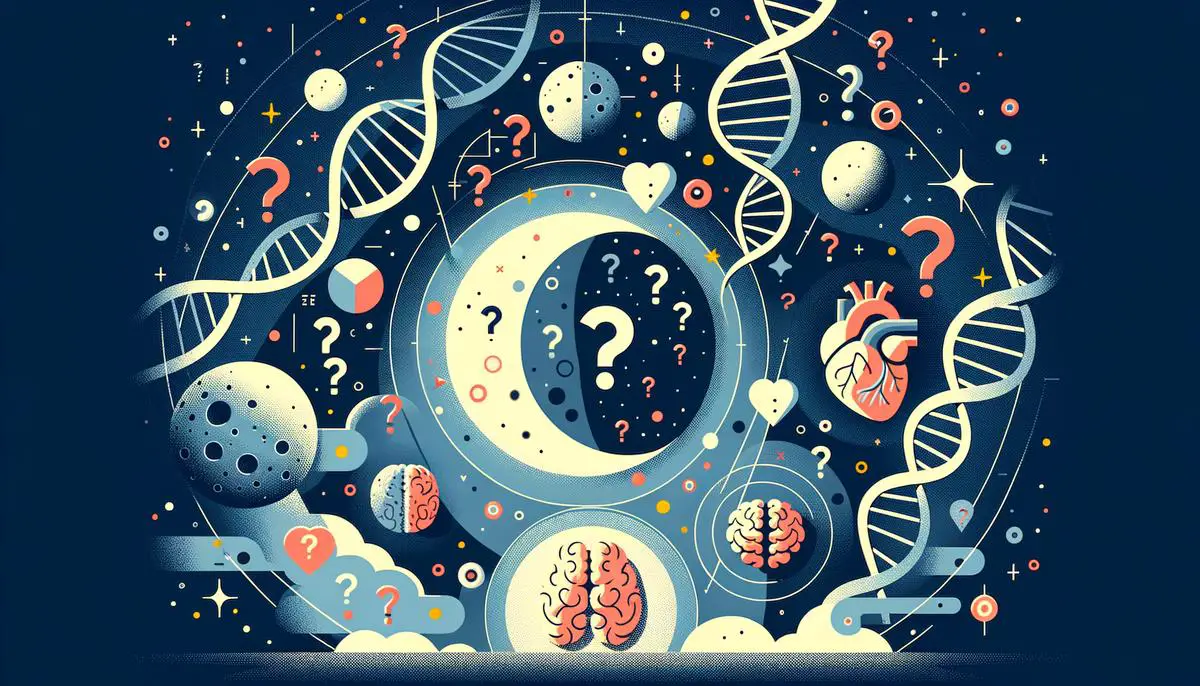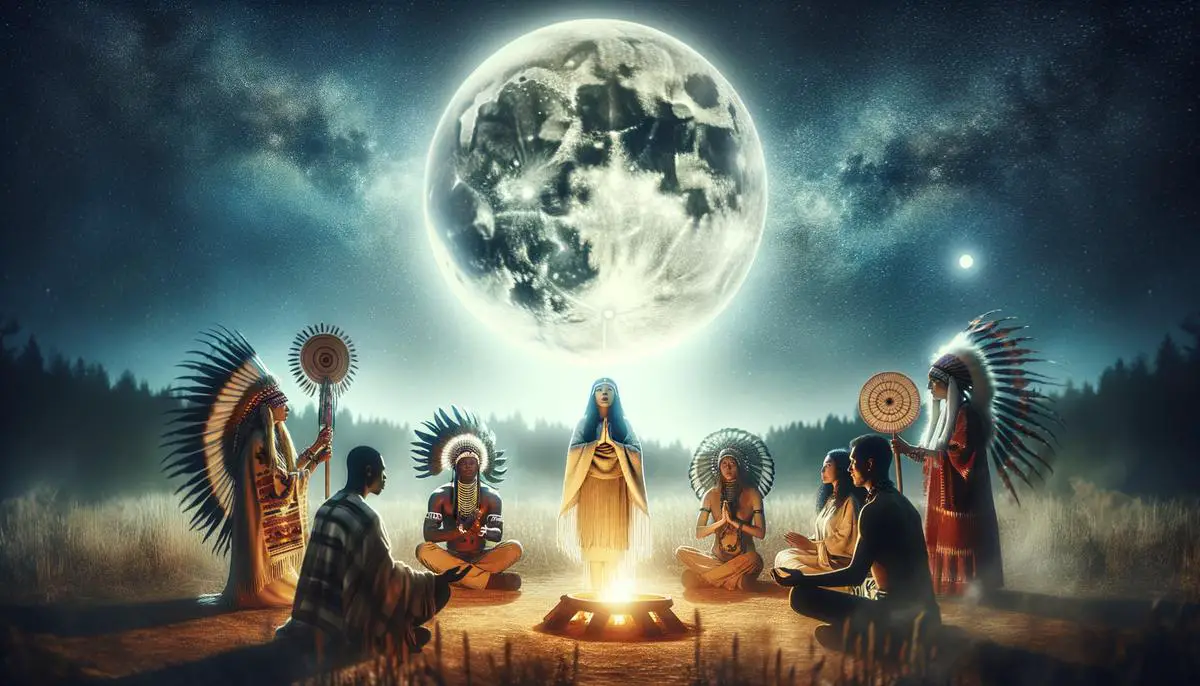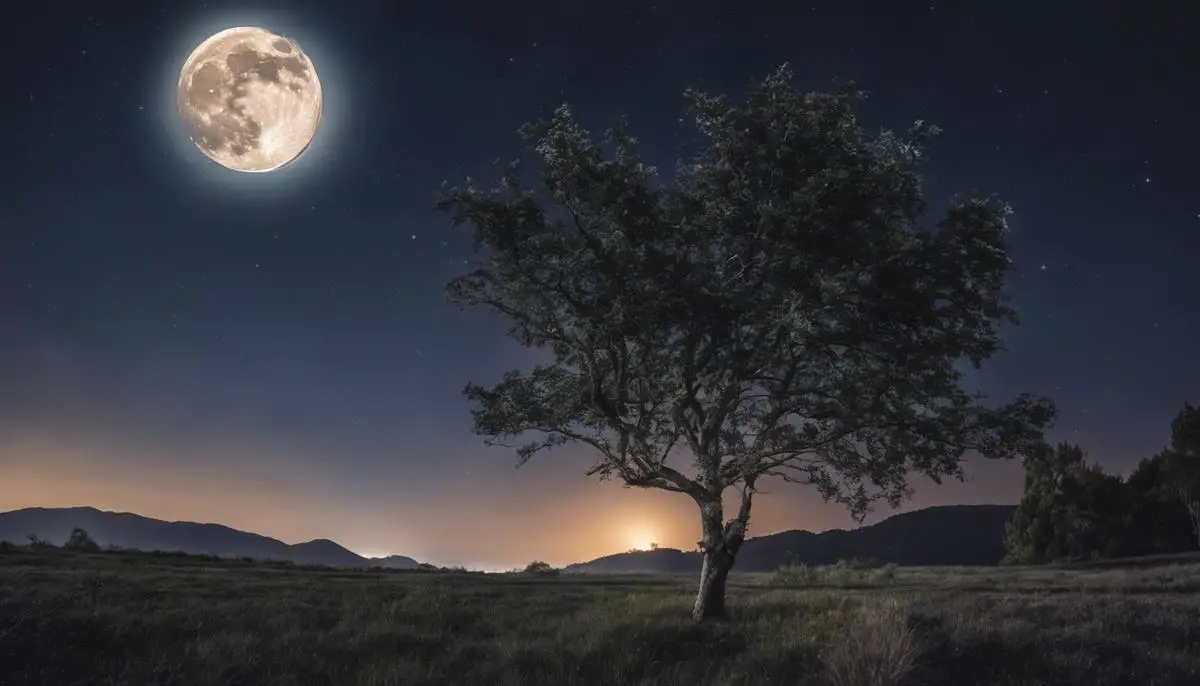The interplay between the celestial bodies and human behavior has been a subject of intrigue across various cultures and epochs, presenting a rich tapestry of beliefs, myths, and scientific inquiries.
Historical Beliefs vs. Modern Science
The term 'lunatic' traces its origins back to the Latin word 'luna', meaning Moon, painting a historical picture of humanity's connection of the full Moon with madness or erratic behavior. This perspective was notably shared by Aristotle and Pliny the Elder, two towering figures of ancient thought who proposed that the full Moon could induce changes in human behavior. Fast forward to the present, and this belief still holds a place in modern culture, despite a wealth of scientific evidence to the contrary.
In ancient times, observing the night sky was often intertwined with superstition and spiritual belief. The full Moon, in particular, was an awe-inspiring presence that influenced various domains of life, from agriculture to fertility, and yes, even mental health. These beliefs were explanations of the unknown that filled gaps in human understanding with the tools available at the time.
Numerous studies in contemporary times have thoroughly investigated the supposed effects of the full Moon on human behavior. The results? A resounding consensus that there is no statistical increase in crime rates, psychiatric hospital admissions, or peculiar behavior that can be directly linked to the lunar cycle1,2. This modern research utilizes rigorous methodology and large datasets to reach conclusions that debunk centuries-old myths.
Yet, despite this disconnect between belief and evidence, the idea that a full Moon can lead to unusual behavior persists. At its core, this endurance might reflect humanity's fondness for narratives that offer simple explanations for complex phenomena.
Even in an era where space is no longer the final frontier but rather a field ripe for exploration and study, the narrative of the full Moon's influence continues to captivate. It's a fascinating example of how ancient beliefs can survive well into modern times, not necessarily as truths that withstand the rigors of science but as cultural touchstones that speak to humanity's quest for answers – and our fondness for a good story.
The conversation between historical beliefs and modern science on the matter of the full Moon highlights an essential aspect of human nature: the thirst for understanding and the beauty of questioning. While scientific evidence clearly illustrates that the Moon does not control our actions, the mythology surrounding it continues to offer a mystical perspective on our lives and behaviors.

The Moon and Human Behavior
Delving into the intricate tapestry of human physiology against the backdrop of the lunar cycle presents an intriguing interplay of myths and empirical data. The exploration of how the Moon might influence human behavior, notably through sleep patterns, menstrual cycles, and mental health, requires a nuanced understanding of both the limitations of scientific research and the multifaceted nature of human biology.
The science of sleep is a domain where the Moon's supposed influence has been subject to considerable scrutiny. Several studies have ventured into the nocturnal realms of human rest, attempting to correlate sleep quality with the phases of the Moon. One landmark study posited that individuals might experience reduced sleep quality and delayed onset during the full Moon phase, a finding that has sparked both intrigue and skepticism within the scientific community3. However, subsequent research has produced mixed results, encapsulating the challenges of confirming a direct lunar influence amidst the myriad factors that govern human sleep. Environmental variables, including light pollution and individual differences in sleep hygiene, further complicate this relationship, underscoring the necessity for cautious interpretation of data suggesting lunar impacts on sleep.
The synchronization of menstrual cycles with lunar phases is another area that teeters on the edge of folklore and science. Historically, the average length of the menstrual cycle has been compared to the duration of the lunar cycle, fertilizing beliefs in a profound connection. Yet, rigorous scientific analysis has largely debunked any robust synchronization, revealing that menstrual cycles span a wide range of durations, only occasionally aligning with the lunar cycle by coincidence rather than causality4. Research in this field highlights the diversity of human biology, cautioning against overarching conclusions derived from limited data sets.
The realm of mental health, perhaps more than any other, has been fertile ground for theories regarding the Moon's influence. The term 'lunacy' itself reflects historical convictions connecting lunar phases with mental instability. Nonetheless, extensive research examining psychiatric admissions, episodes of violence, and instances of acute mental health crises has failed to identify a consistent pattern related to the lunar cycle5. Such findings challenge the persistence of lunar lore in explaining mental health phenomena, advocating for a more grounded approach that acknowledges the complexity of psychiatric conditions without resorting to celestial explanations.
In scrutinizing the scientific research on the Moon's potential effects on human behavior, one must acknowledge the inherent limitations and complexity that characterize the field. While the pull of the Moon unquestionably exerts a tangible influence on Earth's tides, extending this gravitational relationship to directly affect human physiology remains speculative. The interplay between environmental factors, individual differences, and the sheer intricacy of human biology makes it exceedingly difficult to isolate any putative lunar effect.
As we navigate through the night sky of research and belief, it is essential to maintain a stance that is open yet critical, recognizing both our yearning for connection with the cosmos and our responsibility to adhere to scientific rigor. The Moon's sway, whether real or imagined, invites us to reflect on the deeper questions of existence and our place within the universe, reminding us that sometimes, the most enriching mysteries lie not in the answers we find but in the awe and wonder that guide our quest for knowledge.

Cultural and Spiritual Significance
Across the globe, the full moon has etched a sacred space in the heart of various cultures and spiritual traditions, illuminating paths of reverence, reflection, and ritual with its enigmatic glow. This celestial body, gleaming with potent symbolism, reflects the enduring human aspiration to connect with the vast tapestry of existence, marking milestones of time and tides of change in the collective consciousness of humanity.
Within indigenous cultures, the full moon radiates with profound significance, embodying the cyclic nature of life and the deep interconnections between the terrestrial and celestial realms. Native American tribes, for example, have traditionally assigned distinct names to each full moon—the Strawberry Moon, the Snow Moon, the Harvest Moon—to symbolize and honor the rhythms of nature and the resources it bestows upon us at different times of the year6. These lunar designations offer a lexicon of ecological wisdom, enabling tribes to track seasons and to align agricultural activities and social ceremonies with the cosmic dance of Earth and Moon. The spiritual dimensions of these practices are intrinsically tied to a philosophy of balance and harmony with the natural world, viewing the full moon not merely as a spectacle of light but as a sacred mirror reflecting the interconnectedness of all life.
Astrology, a domain where celestial mechanics meld with human affairs, casts the full moon as a pivotal axis in its interpretative framework. The moon, governing emotions and subconscious undercurrents, assumes heightened importance during its full phase, when it is believed to amplify feelings, illuminate hidden desires, and reveal latent potentials within the individual and collective psyche. Astrological tradition posits that each full moon opens a gateway to heightened awareness, providing an opportune moment for release, transformation, and manifestation.
In modern spiritual practices, the full moon transcends mere celestial occurrence, emerging as a focal point for ritual, meditation, and communal gathering. Amidst the bustle of contemporary life, these practices offer a respite, a moment to breathe deeply and turn inward or upward, seeking clarity and connection in the light of the moon. Ceremonies performed under the silvery glow—from drum circles on beaches to solitary rites in candlelit rooms—echo across cultures and time, weaving a pattern of reverence that transcends linguistic and geographical boundaries. Participants may set intentions, release what no longer serves them, and imbibe in the moon's energy to bolster personal growth and healing. Here, the full moon becomes more than a celestial body; it is a symbolic intermediary bridging the human spirit with the cosmic pulse.
Both ancient cultures and contemporary spiritual traditions share an intrinsic understanding: while the full moon's glow does not dictate our lives in the causal sense scrutinized by science, it influences the human experience through its profound psychological and symbolic presence. It marks time's passage with luminous certainty, invites reflection upon life's cyclical nature, and stirs something primal within the human heart—a sense of wonder, a longing for connection, an innate recognition of our place within the greater weave of existence.
Through rituals that honor the full moon, humanity anchors itself to rhythms that predate ticked time, finding grounding in nature's vast cycles while holding space for the mystery of being. In this light, the cultural and spiritual dimensions of the full moon illuminate much more than the night sky; they reveal pathways toward understanding our deep-seated yearnings and the ever-present interconnectedness that binds us to the earth, sky, and each other. Indeed, eons of gazing upon that same bright orb have imbued it with powers that shape not just our behaviors but our very perceptions of what it means to be a part of this world.

While the empirical evidence may not support the ancient beliefs attributing tangible effects of the full moon on human behavior, these narratives persist, highlighting a profound connection between humanity and the cosmos. This enduring fascination and symbolic significance enrich our understanding of ourselves and our place within the universe.
- Rotton J, Kelly IW. Much ado about the full moon: A meta-analysis of lunar-lunacy research. Psychol Bull. 1985;97(2):286-306.
- Owens M, McGowan IW. Madness and the moon: the lunar cycle and psychopathology. Ger J Psychiatry. 2006;9(3):123-127.
- Cajochen C, Altanay-Ekici S, Münch M, Frey S, Knoblauch V, Wirz-Justice A. Evidence that the lunar cycle influences human sleep. Curr Biol. 2013;23(15):1485-1488.
- Komada Y, Sato M, Ikeda Y, et al. The relationship between the lunar phase, menstrual symptoms, and subjective sleep quality among healthy reproductive-age women. Chronobiol Int. 2021;38(2):229-236.
- McLay RN, Daylo AA, Hammer PS. No effect of lunar cycle on psychiatric admissions or emergency evaluations. Mil Med. 2006;171(12):1239-1242.
- Hagan JC. Influence of the full moon on human behavior: myth or reality? J Psychosoc Nurs Ment Health Serv. 1988;26(10):27-30.
![]()
